Portulacaria carrissoana
Portulacaria carrissoana (Exell & Mendonça) Bruyns & Klak (= Ceraria carrissoana Exell & Mendonça)
Family: Didiereaceae
Common names: Angolan porkbush (Eng.), Angola-wolftoon (Afr.)
Introduction
Portulacaria carrissoana is an ascending shrub with rounded greyish-green succulent leaves, very small cream-coloured flowers on short racemes in late summer and autumn and characteristic bark that flakes in horizontal yellowish-brown strips. It grows widespread in northwestern Namibia and southwestern Angola. Best for dry bushveld (savanna) or desert gardens.
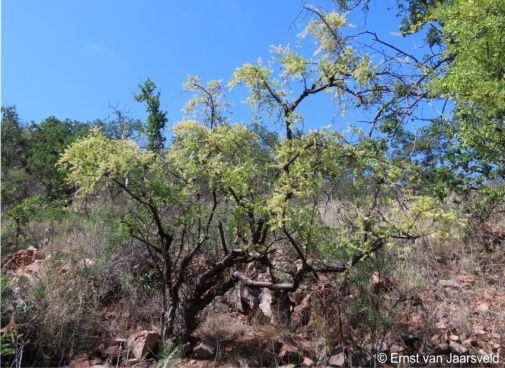
Fig. 1. The Angolan porkbush (Portulacaria carrissoana) growing on an upper north-facing sandstone slope on Sierra Chamalinde, southwestern Angola.
Description
Description
Slow growing, much-branched, succulent-leaved evergreen shrub, 2-3 m tall, with a rounded to spreading crown. The roots are succulent, bearing brownish-maroon bark when exposed. Horizontal spreading roots often sprout, forming plantlets close to the mother plant. Mature plants usually with a solitary main stem or sometimes with more than one stem. Bark in older specimens yellowish-brown, tough and peeling in horizontal leathery strips, sometimes blackish in older specimens. The young stems often reddish. The leaves are fleshy, obovate, in opposite pairs (decussate), greyish to olive-green, with a short petiole 1-5 mm long. The leaves 10–35 (56) × 10–30(68) mm, spreading, with a smooth surface (without hairs). The leaf ends are blunt (obtuse) to subacute. The small yellowish-green flowers are borne on short axillary branches, the 5 petals yellowish-green with blunt ends (obtuse), becoming reflexed, and with shortened bract-like calyces. The stamens arising from the petal base, slightly shorter than petals. The seed is a pale brown, winged, flattish nutlet, 3.1–5.3 × 1.9–3.0 mm. Flowering time is in summer and autumn, from March to May. Seeds are dispersed in autumn and winter.
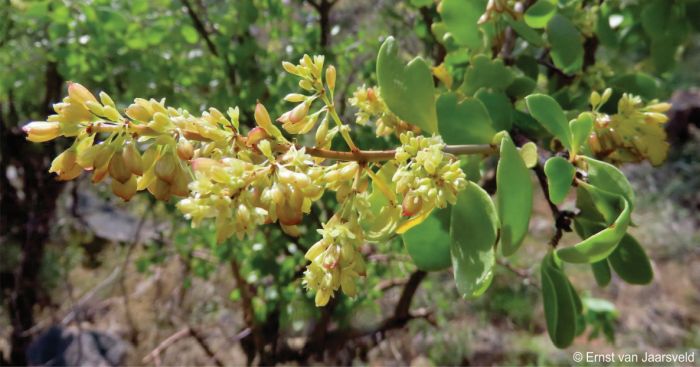
Fig. 2. Portulacaria carrissoana in flower, with young flattish fruits, Sierra Chamalinde, southwestern Angola.
Conservation Status
Status
Plants are widespread and not threatened. Consequently it is assessed as Least Concern (LC) by the IUCN Red List (Timberlake 2019).
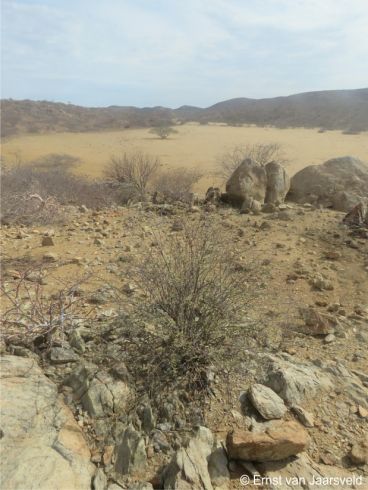
Fig. 3. Portulacaria carrissoana in semi-desert habitat south of Caranculo, southwestern Angola.
Distribution and habitat
Distribution description
Portulacaria carrissoana is only known from the northern Namib Desert, growing both in the north-west of Namibia, from Sesfontein District in the south, to southwestern Angola in the north. It has been recorded growing on sandstone, granite or dolomite formations. Plants grow in Desert and dry Savanna at altitude of between 350 and 2 000 m. It sometimes shares its habitat with Portulacaria longipedunculata (sympatric).
South of Caranculo in Angola, plants were observed in semi-desert growing in dry mopane and Commiphora savanna on granite-derived soil. Prominent species at this locality include Colophospermum mopane, Commiphora mossamedensis, Commiphora virgata, Commiphora multijuga, Ptaeroxylon obliquum, Senegalia mellifera subsp. mellifera, Moringa ovalifolia, Sesamothamnus benguellensis, Aeollanthus namibiensis, Sterculia africana, Boscia tomentosa, Crinum buphanoides, Turnera oculata var oculata, Euphorbia subsalsa and Rhigozum virgatum.
On the Sierra Chamalinde Mountain in south-west Angola Portulacaria carrissoana plants were observed on the upper slopes of the mountain, in dry savanna growing on sandstone-derived soil. Associated plants include Turnera oculata var. paucipilosa, Diplorhynchus condylocarpon, Dichrostachys cinerea, Boscia mossambicensis, Boscia microphylla, Commiphora glandulosa, Commiphora multijuga, Commiphora glaucescens, Commiphora mollis, Senegalia ataxacantha, Grewia bicolor, Ipomoea albivenia, Kalanchoe lanceolata, Petalidium coccineum, Combretum apiculatum, Boscia albitrunca, Philenoptera nelsii (= Lonchocarpus nelsii), Croton gratissimus, Strophanthus amboensis, Mundulea sericea, Myrothamnus flabellifolius, Dalbergia nitidula, Montinia caryophyllacea and Combretum zeyheri. Associated succulent plants include Cotyledon orbiculata, Kalanchoe lanceolata and Kalanchoe laciniata.
At Middelberg, northern Kaokoveld (north-west Namibia), plants were observed growing on the mountain peak growing among both dolomite and quartzitic sandstone derived soil. Here plants were observed growing with Aloe hereroensis, Cussonia angolensis, Ficus cordata, Euphorbia otjingandu, Huernia urceolata, Tinospora fragosa, Obetia carruthersiana and Sansevieria pearsonii.
Rainfall occurs in summer and autumn, the region receiving between about 50 and 150 mm per annum. The climate is mild with very hot summers, and temperatures often over 40°C in summer. Winters are warm during the day and nights are cooler but without frost.
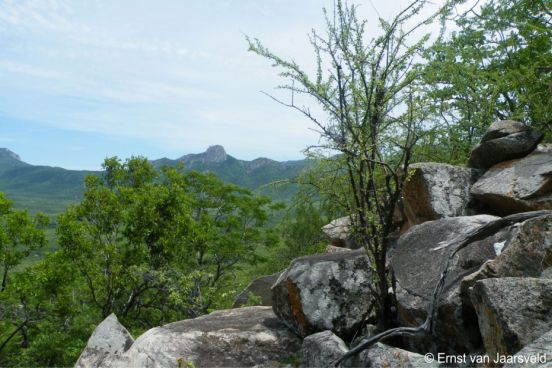
Fig. 4. The Angola porkbush (Portulacaria carrissoana ) on a granite outcrop below Leba Pass, southwestern Angola.
Derivation of name and historical aspects
History
Portulacaria carrissoana was named in 1939 as Ceraria carrissoana by Exell & Mendonça in the Portuguese Magazine, Boletim Sociedade Broteriana. Arthur Exell (1901-1993) was a botanist from the British Museum who visited Angola in 1937 and 1938 (Glen & Germishuizen 2010). He travelled with the Portuguese botanist Francesco Mendonça (1889-1982). The new species was based on plants collected by these two botanists in south-west Angola, 70 km along the railroad from Moçâmedes, at 350–450 m, on 19 May 1937. The name carrissoana, meaning ‘along the railroad’, refers to where the type specimen was recorded, and is derived from carris meaning ‘rails’ (in Portuguese.
Portulacaria carrissoana is easily distinguished by its horizontally flaking tough bark, flattened olive to greyish-green succulent leaves in opposite pairs and small yellowish-green flowers.
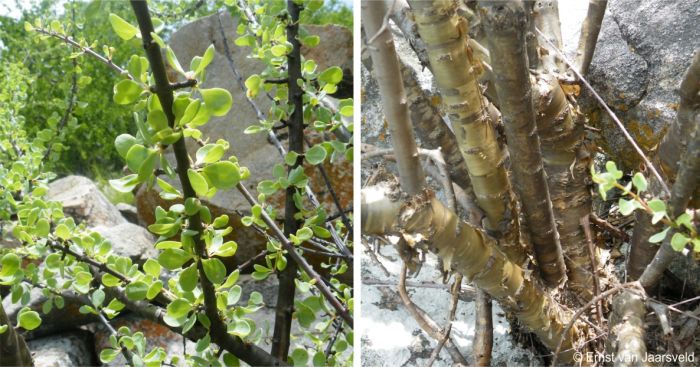
Fig. 5. Close-up of the leaves (left) and horizontally peeling bark (right) of Portulacaria carrissoana growing on granite hills below Leba Pass, southwestern Angola.
Ecology
Ecology
Portulacaria carrissoana is adapted to very hot, dry, semi-desert conditions, with frequent periods of drought. The summers are usually very hot with rainfall mainly in summer and autumn. It is relatively slow growing. Moisture is stored in its fleshy roots, stems and fleshy flat leaves. The younger branches are reddish due to the pigment anthocyanin, which protects the young stems from sun burn. The leathery, light coloured, greyish, reflective bark that often peels in horizontal strips, is a protection from the sun. The flowers are pollinated by small insects. The winged seeds carrying the small nutlets are dispersed by wind.
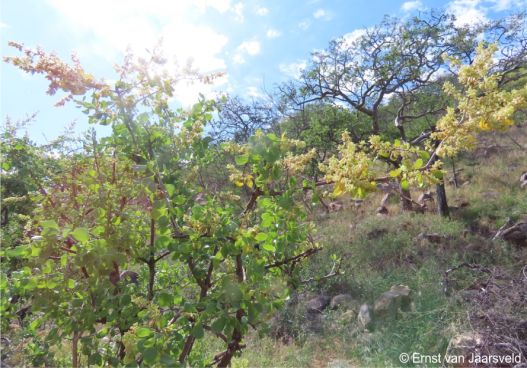
Fig. 6. A flowering branch of Portulacaria carrissoana, Sierra Chamalinde, southwestern Angola.
Uses
Use
Portulacaria carrissoana is best grown in hot and exposed desert gardens. It can be grown both in containers and desert gardens. Best grown in groups or as a focal point. Outside of its desert habitat, P. carrissoana is difficult and best grown in a greenhouse where conditions can be controlled. The soil should be a sandy gravel and well drained. Plants are slow growing.
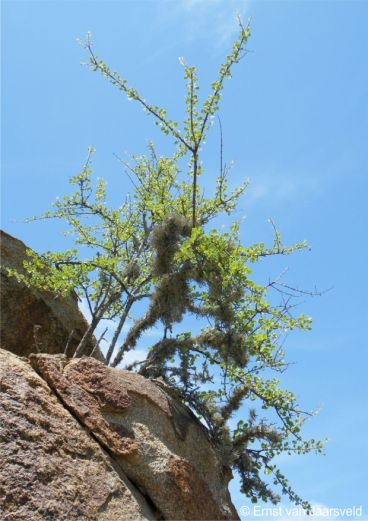
Fig. 7. Portulacaria carrissoana growing on a granite outcrop between Moçâmedes and Leba Pass, southwestern Angola. Note the lichens on the branches, which can grow because of the regular fog caused by the cold Benguela Current.
Growing Portulacaria carrissoana
Grow
Propagation is from both cuttings and seed. Sow seed in summer or autumn in a sandy well-drained soil. The suggested mixture consist of 2 parts sand or gravel, 1 part loam and 1 part compost. Cover the seed with a thin layer of sand (1-2 mm thickness). As a rule of thumb, seed can be covered 2X the diameter of the seed. First moisten the medium and once sown the seed will stick to the substrate. Cover with the sand. Germination is within 3 weeks and once well rooted transfer to individual containers. These can be planted out as soon as they are big enough to handle.
References
- Bruyns, P., Oliveira-Neto, M., Melo-de-Pinna, G & Klak, C. 2014. Phylogenetic relationships in the Didiereaceae with special reference to subfamily Portulacarioideae. Taxon 63(5):1053–1064.
- Christenhusz, M.J.M., Fay, M.F. & Chase, M.W. 2017. Plants of the World, an illustrated Encyclopedia of vascular plants. Kew Publishing, Royal Botanic Gardens, Kew.
- Curtis, B.A. & Mannheimer, C.A. 2005. Tree Atlas of Namibia. National Botanical Research Institute, Windhoek.
- Exell, A.W. & Mendonça, F.A. 1939. Novas espécies da flora de Angola. Boletim da Sociedade Broteriana sér. 2(13): 309–310.
- Glen, H.F. & Germishuizen, G. (compilers). 2010. Botanical exploration of southern Africa, edition 2. Strelitzia 26. South African National Biodiversity Institute, Pretoria.
- Leistner, O. 2022. Early botanical exploration in the Kaokoveld (northwestern Namibia) 1957. SANBI Biodiversity Series 31. South African National Biodiversity Institute, Pretoria.
- Mannheimer, C.A. & Curtis, B.A. 2018. Le Roux and Müller’s field guide to the trees and shrubs of Namibia. Second edition. Namibia Publishing House, Windhoek.
- Mendelsohn, J., Jarvis, A., Roberts, C. & Robertson, T. 2002. Atlas of Namibia. David Philip, Cape Town.
- Rowley, G.D. 2002. Ceraria pp. 379–380. In U. Eggli, (Ed) Illustrated handbook of succulent plants: dicotyledons. Springer-Verlag, Berlin.
- Smith, C.A. 1966. Common names of South African plants. Memoirs of the Botanical Survey of South Africa No. 35. Government Printer, Pretoria.
- Swanepoel, W. 2008. Ceraria kuneneana (Didiereaceae/Portulacaceae), a new species from the Kaokoveld, Namibia. South African Journal of Botany 74(1): 71-75.
- Timberlake, J. 2019. Portulacaria carrissoana. The IUCN Red List of Threatened Species 2019: e.T146426064A146819165. https://dx.doi.org/10.2305/IUCN.UK.2019-3.RLTS.T146426064A146819165.en.
- Van Jaarsveld, E.J. 2010. Waterwise gardening in South Africa and Namibia. Struik, Cape Town.
Credits
Ernst van Jaarsveld
Kirstenbosch National Botanical Garden (Retired)
Babylonstoren Farm (Current)
Extraordinary senior lecturer and researcher,
Department of Biodiversity and Conservation, University of the Western Cape
April 2024
Plant Attributes:
Plant Type: Shrub, Succulent
SA Distribution:
Soil type: Sandy, Loam
Flowering season: Spring, Early Summer
PH: Acid, Neutral
Flower colour: Cream
Aspect: Full Sun
Gardening skill: Challenging
Special Features:
Horticultural zones








Rate this article
Article well written and informative
Rate this plant
Is this an interesting plant?
Login to add your Comment
Back to topNot registered yet? Click here to register.